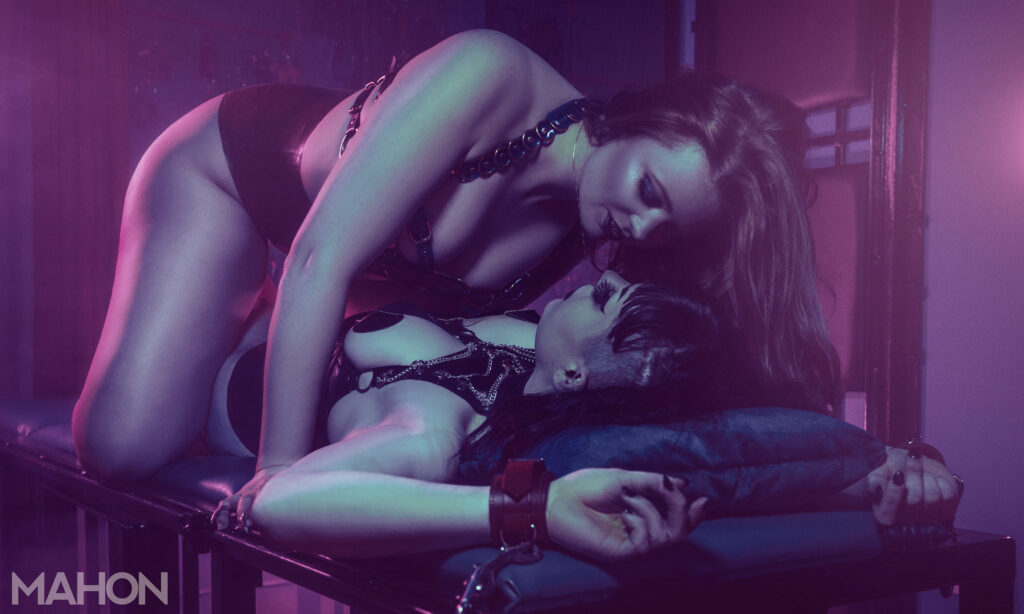There are endless ways to restrain a body. Leather, rope, tape, instruction. And while the aesthetics are seductive—the crisp line of jute on skin, the sound of a carabiner snapping shut—what interests me most about bondage is what it unlocks.
For some, it’s arousal. For others, it’s peace. For many, it’s both.
I work with a wide range of people, but often my clients are neurodiverse, gender non-conforming, and stepping into this kind of intimacy for the first time. Bondage gives them something few other spaces in the world do: permission to let go. To stop performing. To feel.

Take rope, for example. Shibari is my favourite form of bondage because of how communicative it is. The body speaks through movement, breath, muscle tension. The rope replies. I can make it tender, sadistic, grounding, or maddeningly slow. It invites stillness, not just in the limbs, but in the mind.
I have a regular client who begins every session bound, blindfolded, and with noise cancelling headphones. I watch him drop into himself over time—his limbs softening, his face slackening, his breath deepening. When he’s finally ready to come back to the world, we begin. But not before. That transition—that visible surrender into stillness—is as beautiful as anything we do afterward.
Other times, bondage is far from quiet. Tease and denial with rope can be agonisingly erotic. I’ve seen people squirm, moan, tremble under the lightest touch once they’re bound. And not just them. I’ve ended sessions flushed and desperate myself, all without a single item of clothing removed.
Then there is the raw power of physical domination. A different kind of restraint, but no less potent. There is something wildly subversive about pinning a man down with my thighs—not just arousing, but liberating. You can see the shift in their eyes when it happens. When they realise they’re completely, helplessly held. And that they like it.
Mental bondage is perhaps the most delicious. Nothing but a voice, a rule, and their own obedience. I leave them free to move, then instruct them not to. I play just out of reach. I drag it out, slowly, wickedly, until they’re vibrating with the effort of not giving in. That kind of self-restraint is the most erotic kind of suffering.

There’s also practical bondage—leather cuffs, clips, hoods, even mummification. I didn’t expect to enjoy wrapping someone in cling film and tape until I tried it. The heat, the pressure, the focus. The way someone writhes when they know exactly what part of their body has been left exposed.
Bondage doesn’t have to be elaborate. A collar can change a headspace. A hood can alter a breath. What matters is what it creates between us: anticipation, tension, control, care.
And make no mistake—care is always part of it. I’m watching their breathing, checking skin tone, tuning into how their body reacts. I ask questions, listen to answers, adjust. I don’t stick to a rigid plan because no two bodies are alike—not theirs, not mine. What I do one day may not suit the next, and that’s part of the art. The improvisation is half the thrill.
If bondage teaches anything, it’s this: there is deep power in stillness. Not the kind that dominates through noise, but the kind that settles into the bones. That holds someone long enough for them to finally, fully exhale.
And when they do, I’m already waiting.